This popular salty/sweet union hit the scene in a big way in the ’90s when French pastry chef Pierre Hermé unveiled a salted-caramel macaron topped with fleur de sel. Today, it’s commonly made by topping caramel — a soft, dense and chewy candy made by boiling milk or cream, sugar, butter and vanilla flavouring — with salt, such as coarse sea salt or smoked salt, creating a union of sweet and salty. No longer reserved for the dessert counter, the foodservice community is discovering endless possibilities for the duo, from blending the ingredients in iced coffee, drizzling them on ice cream or shaking them in a cocktail. “It has moved past being a trendy flavour and has now become a staple for chocolates and sweets,” says Sandra Abballe, owner and chocolatier of Succulent Chocolates and Sweets Inc. in Vaughan, Ont. “Since this delicious flavour combines the two things we crave most — sugar and salt — it’s no wonder people go crazy for it. We launched our hand-painted salted caramel bonbon as part of our Valentine’s Day collection earlier this year. Our clients went so crazy for it we had to build it into our classic bonbon collection available year round.”
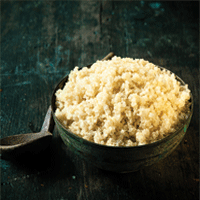 The quinoa grain-like seed has been a diet staple for more than 7,000 years, when it was farmed by the Incas in the Andes mountains. More recently, it’s earned ‘superfood’ status, because it’s packed with minerals, vitamins, fatty acids and antioxidants. Quinoa is rich in potassium, iron, calcium and riboflavin and has dietary fibre that helps lower cholesterol and improve digestion. And, it’s been found to be a resilient grain. Due to its ease in adapting to different soil types and ability to withstand drought and frost, quinoa has been dubbed a food-secure item by the Rome-based Food and Agriculture Organization of the United Nations, which highlighted its role in helping to eradicate hunger, malnutrition and poverty. Its seeds can appear white, gray, pink or light brown in colour and measure two millimetres in diameter. Seeds contain a bitter outer coating, which should be removed prior to eating. Given its mild flavour, chefs can substitute it for rice to give a dish a high-protein boost.
The quinoa grain-like seed has been a diet staple for more than 7,000 years, when it was farmed by the Incas in the Andes mountains. More recently, it’s earned ‘superfood’ status, because it’s packed with minerals, vitamins, fatty acids and antioxidants. Quinoa is rich in potassium, iron, calcium and riboflavin and has dietary fibre that helps lower cholesterol and improve digestion. And, it’s been found to be a resilient grain. Due to its ease in adapting to different soil types and ability to withstand drought and frost, quinoa has been dubbed a food-secure item by the Rome-based Food and Agriculture Organization of the United Nations, which highlighted its role in helping to eradicate hunger, malnutrition and poverty. Its seeds can appear white, gray, pink or light brown in colour and measure two millimetres in diameter. Seeds contain a bitter outer coating, which should be removed prior to eating. Given its mild flavour, chefs can substitute it for rice to give a dish a high-protein boost.
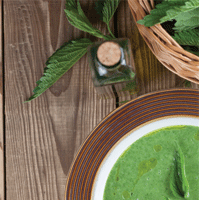 It sounds daunting to cook with an ingredient that may cause a rash when you touch its needle-like hairs, but chefs aren’t deterred by the “stinging” nettle. It’s a favourite on menus across the country for its earthy flavour, which has been described to taste like spinach and cucumber. “Nettles are the first sign of spring — a super exciting time for a chef,” says Chris Whittaker, executive chef at Vancouver’s Forage. The Urtica dioica, or stinging nettle plant, grows as tall as four feet, blooming between late spring and early autumn in many regions, including North America and Europe. Whittaker likes adding the plant to pesto and soups or anywhere spinach would be used. But, practise caution while preparing the prickly plant, which needs to be cooked before eating. Whittaker has his preparation down to a science: “They are really easy to prepare. You should wear gloves when handling them. Once they are blanched — they should be blanched for 45 seconds in boiling water, then plunged into ice water — they are safe to handle as normal,” he says. Of course, nettles aren’t the only interesting plant making it on the menu — fiddleheads, sorrel and elderflower are also favourites.
It sounds daunting to cook with an ingredient that may cause a rash when you touch its needle-like hairs, but chefs aren’t deterred by the “stinging” nettle. It’s a favourite on menus across the country for its earthy flavour, which has been described to taste like spinach and cucumber. “Nettles are the first sign of spring — a super exciting time for a chef,” says Chris Whittaker, executive chef at Vancouver’s Forage. The Urtica dioica, or stinging nettle plant, grows as tall as four feet, blooming between late spring and early autumn in many regions, including North America and Europe. Whittaker likes adding the plant to pesto and soups or anywhere spinach would be used. But, practise caution while preparing the prickly plant, which needs to be cooked before eating. Whittaker has his preparation down to a science: “They are really easy to prepare. You should wear gloves when handling them. Once they are blanched — they should be blanched for 45 seconds in boiling water, then plunged into ice water — they are safe to handle as normal,” he says. Of course, nettles aren’t the only interesting plant making it on the menu — fiddleheads, sorrel and elderflower are also favourites.
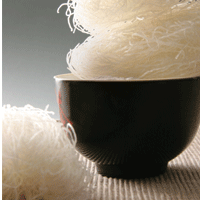 Wheat-free noodles are coming of age, thanks to the gluten-free craze and the rise of Asian cuisine, which favours many varieties of rice noodles and buckwheat-based soba noodles. Made of rice flour, tapioca flour or buckwheat, varieties include thin soba noodles, He Fen and Pho rice noodles, mungbean cellophane noodles or “glass” noodles and vermicelli. Today, wheat-free noodles are being served in a variety of ways, from cooled to stewed or fried. Chilled soba, for example, is often served garnished with bits of dried nori seaweed, with a soba tsuyu dipping sauce on the side, while rice noodles are used as soup bases and in meat-based dishes in many Thai, Indonesian, Chinese and Cambodian fare. When cooking, rice noodles are trickier to boil than their wheat counterparts due to their delicate nature, while soba noodles need to be rinsed before cooking so they don’t stick together.
Wheat-free noodles are coming of age, thanks to the gluten-free craze and the rise of Asian cuisine, which favours many varieties of rice noodles and buckwheat-based soba noodles. Made of rice flour, tapioca flour or buckwheat, varieties include thin soba noodles, He Fen and Pho rice noodles, mungbean cellophane noodles or “glass” noodles and vermicelli. Today, wheat-free noodles are being served in a variety of ways, from cooled to stewed or fried. Chilled soba, for example, is often served garnished with bits of dried nori seaweed, with a soba tsuyu dipping sauce on the side, while rice noodles are used as soup bases and in meat-based dishes in many Thai, Indonesian, Chinese and Cambodian fare. When cooking, rice noodles are trickier to boil than their wheat counterparts due to their delicate nature, while soba noodles need to be rinsed before cooking so they don’t stick together.
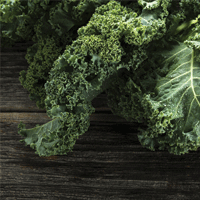 The recent kale craze has led to the rise of other leafy greens such as Swiss chard and baby bok choy, all touted for their healthful benefits. Kale, a descendent of wild cabbage, was grown by the Greeks and Romans more than 2,000 years ago. But, Swiss chard, with its Sicilian roots, only began growing in gardens throughout England and the U.S. in the 1830s. Interestingly, when it reached Canadian soil, it was used as green manure in gardens. Bok choy, on the other hand, is a cruciferous vegetable dating back to 5th century AD in southern China. These days, the increased popularity of this green trio comes in response to demands from a more health-conscious consumer. “Leafy greens are the strong man in the vegetable category,” says Katie Jessop, RD, national business development manager, Health Check, Canada, Heart and Stroke Foundation in Ottawa. “Whether we are talking mustard greens, chards, kale or cabbages, they have great texture raw and stand up to cooking, adding crunch and texture in most cook-top preparations where their salady cousins wilt in the heat.” They are also packed with nutrients, she adds. “They contain higher calcium than most vegetables, which is good for bone strength. These greens stand out for their high content of Vitamin A, offering more than a day’s worth in each serving.”
The recent kale craze has led to the rise of other leafy greens such as Swiss chard and baby bok choy, all touted for their healthful benefits. Kale, a descendent of wild cabbage, was grown by the Greeks and Romans more than 2,000 years ago. But, Swiss chard, with its Sicilian roots, only began growing in gardens throughout England and the U.S. in the 1830s. Interestingly, when it reached Canadian soil, it was used as green manure in gardens. Bok choy, on the other hand, is a cruciferous vegetable dating back to 5th century AD in southern China. These days, the increased popularity of this green trio comes in response to demands from a more health-conscious consumer. “Leafy greens are the strong man in the vegetable category,” says Katie Jessop, RD, national business development manager, Health Check, Canada, Heart and Stroke Foundation in Ottawa. “Whether we are talking mustard greens, chards, kale or cabbages, they have great texture raw and stand up to cooking, adding crunch and texture in most cook-top preparations where their salady cousins wilt in the heat.” They are also packed with nutrients, she adds. “They contain higher calcium than most vegetables, which is good for bone strength. These greens stand out for their high content of Vitamin A, offering more than a day’s worth in each serving.”
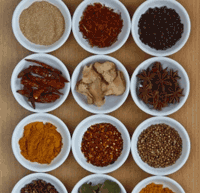 Canada’s growing ethnic population is driving chefs to find new ways to add heat to dishes. And, thanks to the cult-like following that Sriracha sauce has generated, chili-based spices are growing in popularity. Harissa is a fiery paste featuring chilies, roasted red peppers, garlic paste, cumin, caraway, coriander seed, paprika and olive oil. Its main ingredient — chilies — are part of the capsicum family, which originated in the Americas, but the Spanish and Portuguese introduced it to colonies in Africa, India and Southeast Asia. Not only can it be used as a flavour base, meat rub, salad dressing or pasta sauce but as a condiment in a variety of Libyan, Tunisian, Algerian and Morrocan dishes. It is believed that harissa not only stimulates the appetite but aids digestion. It can be made by cutting off the stem of chilies and shaking out the seeds — or for a more intense flavour, keep the seeds intact. Next, toast caraway, coriander and cumin in a dry skillet, then purée with the chilies and spices in a food processer with oil and garlic. Harissa paste can keep for approximately one week and can be frozen for up to two months.
Canada’s growing ethnic population is driving chefs to find new ways to add heat to dishes. And, thanks to the cult-like following that Sriracha sauce has generated, chili-based spices are growing in popularity. Harissa is a fiery paste featuring chilies, roasted red peppers, garlic paste, cumin, caraway, coriander seed, paprika and olive oil. Its main ingredient — chilies — are part of the capsicum family, which originated in the Americas, but the Spanish and Portuguese introduced it to colonies in Africa, India and Southeast Asia. Not only can it be used as a flavour base, meat rub, salad dressing or pasta sauce but as a condiment in a variety of Libyan, Tunisian, Algerian and Morrocan dishes. It is believed that harissa not only stimulates the appetite but aids digestion. It can be made by cutting off the stem of chilies and shaking out the seeds — or for a more intense flavour, keep the seeds intact. Next, toast caraway, coriander and cumin in a dry skillet, then purée with the chilies and spices in a food processer with oil and garlic. Harissa paste can keep for approximately one week and can be frozen for up to two months.
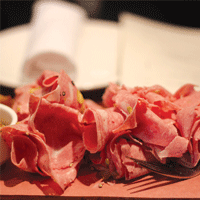 A hotdog, sturdy slice of bologna or salami is nothing to sneeze at when made well. They’re all examples of charcuterie, which translates to cooked meat, or chair cuit in French. It’s the art of preserving meat — either by salting, brining, smoking or cooking — and the preparation method has been around for some 6,000 years. The idea of preserving meats first rose to popularity during the Roman Empire and then became du rigueur during the Middle Ages in France. Lack of reliable refrigeration made the techniques employed by charcutiers (those proficient in the ways of preserving meat) a necessity. The tradition was avidly revived across North America in the late ’90s, early ’00s when chefs were inspired by the likes of the U.K.’s famed chef Fergus Henderson, who touted the ecological and ethical values of nose-to-tail dining. The waste-not, want-not philosophy took off and appealed to chefs who began to learn the ancient techniques of proper butchery and meat preservation. While pork is often a charcutier’s protein of choice, lamb, beef and even duck are made into everything from traditional prosciutto, tangy salami, house-smoked bacon, paper-thin bresaola to terrines and nutty patés. Old World traditions and recipes have crossed the pond and have been happily filling bellies at Canada’s wine bars and restaurants, with no end in sight.
A hotdog, sturdy slice of bologna or salami is nothing to sneeze at when made well. They’re all examples of charcuterie, which translates to cooked meat, or chair cuit in French. It’s the art of preserving meat — either by salting, brining, smoking or cooking — and the preparation method has been around for some 6,000 years. The idea of preserving meats first rose to popularity during the Roman Empire and then became du rigueur during the Middle Ages in France. Lack of reliable refrigeration made the techniques employed by charcutiers (those proficient in the ways of preserving meat) a necessity. The tradition was avidly revived across North America in the late ’90s, early ’00s when chefs were inspired by the likes of the U.K.’s famed chef Fergus Henderson, who touted the ecological and ethical values of nose-to-tail dining. The waste-not, want-not philosophy took off and appealed to chefs who began to learn the ancient techniques of proper butchery and meat preservation. While pork is often a charcutier’s protein of choice, lamb, beef and even duck are made into everything from traditional prosciutto, tangy salami, house-smoked bacon, paper-thin bresaola to terrines and nutty patés. Old World traditions and recipes have crossed the pond and have been happily filling bellies at Canada’s wine bars and restaurants, with no end in sight.
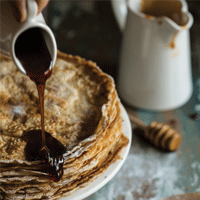 Mother Nature’s candy is plentiful, and it’s showing up in dishes and beverages across the foodservice industry as chefs and customers seek healthier sugar alternatives and local whole foods with unique flavour profiles. “Your body knows how to properly absorb natural sweeteners, so why use anything else?” asks Hayley Rosenberg, chef and owner of Nourish Cafe & Bistro in Victoria, B.C. “It’s the more healthful choice and filled with tons of vitamins, minerals and enzymes. As opposed to highly processed sweeteners, natural ones have less of a negative effect on the adrenals.” Such ingredients are plentiful and varied, with cooks using everything from coconut, stevia, maple syrup, agave, honey and molasses to create the perfect sweet balance in their drinks, desserts and main dishes. The positives are numerous: honey is purported to be heart healthy, thanks to its natural antioxidants; Agave is touted to have a low-glycemic index, which makes the caramel-like syrup a good choice for diabetics; and molasses is rich in iron, calcium and antioxidants. Who needs the white stuff now?
Mother Nature’s candy is plentiful, and it’s showing up in dishes and beverages across the foodservice industry as chefs and customers seek healthier sugar alternatives and local whole foods with unique flavour profiles. “Your body knows how to properly absorb natural sweeteners, so why use anything else?” asks Hayley Rosenberg, chef and owner of Nourish Cafe & Bistro in Victoria, B.C. “It’s the more healthful choice and filled with tons of vitamins, minerals and enzymes. As opposed to highly processed sweeteners, natural ones have less of a negative effect on the adrenals.” Such ingredients are plentiful and varied, with cooks using everything from coconut, stevia, maple syrup, agave, honey and molasses to create the perfect sweet balance in their drinks, desserts and main dishes. The positives are numerous: honey is purported to be heart healthy, thanks to its natural antioxidants; Agave is touted to have a low-glycemic index, which makes the caramel-like syrup a good choice for diabetics; and molasses is rich in iron, calcium and antioxidants. Who needs the white stuff now?
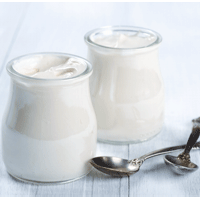 Yogurt isn’t just for breakfast anymore. The meteoric rise of Greek yogurt in Canada began circa 2010 when the thick, tangy substance — created by straining conventional yogurt through a cheesecloth — was on the tip of everyone’s tongue. According to a 2012 report from Switzerland-based global financial services firm UBS, it took Greek yogurt a mere three years to rise to its current multibillion-dollar status; most of that growth is focused in North America. The creamy yogurt dates back to ancient Greece, but it’s now marketed towards health-conscious Canadians looking to add a dollop of the exotic to their meals. “Consumers looking for healthier options love Greek yogurt with its higher level of protein,” says Christine Cushing, a Greek chef and TV personality. “If you ask us Greeks, we love how thick it is and its tangy flavour.” Home cooks and celebrity chefs alike tout Greek yogurt’s versatility and use it in everything from appetizers and mains to desserts, with an added health-conscious Probiotic (good bacteria) boost. And now, its cousin Labneh, the Lebanese version of Greek yogurt, is also capturing the creative fancy of chefs and diners across Canada.
Yogurt isn’t just for breakfast anymore. The meteoric rise of Greek yogurt in Canada began circa 2010 when the thick, tangy substance — created by straining conventional yogurt through a cheesecloth — was on the tip of everyone’s tongue. According to a 2012 report from Switzerland-based global financial services firm UBS, it took Greek yogurt a mere three years to rise to its current multibillion-dollar status; most of that growth is focused in North America. The creamy yogurt dates back to ancient Greece, but it’s now marketed towards health-conscious Canadians looking to add a dollop of the exotic to their meals. “Consumers looking for healthier options love Greek yogurt with its higher level of protein,” says Christine Cushing, a Greek chef and TV personality. “If you ask us Greeks, we love how thick it is and its tangy flavour.” Home cooks and celebrity chefs alike tout Greek yogurt’s versatility and use it in everything from appetizers and mains to desserts, with an added health-conscious Probiotic (good bacteria) boost. And now, its cousin Labneh, the Lebanese version of Greek yogurt, is also capturing the creative fancy of chefs and diners across Canada.





















